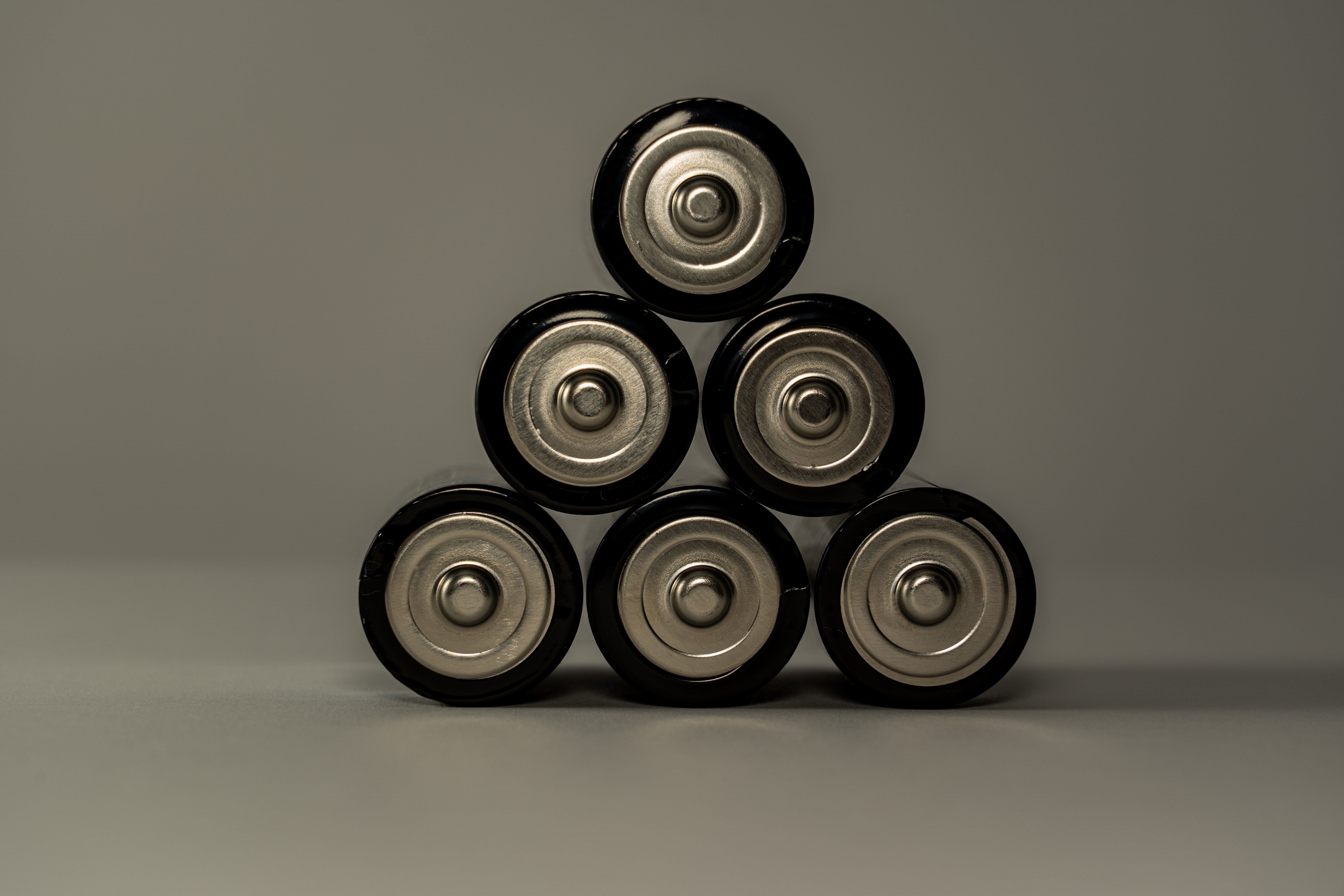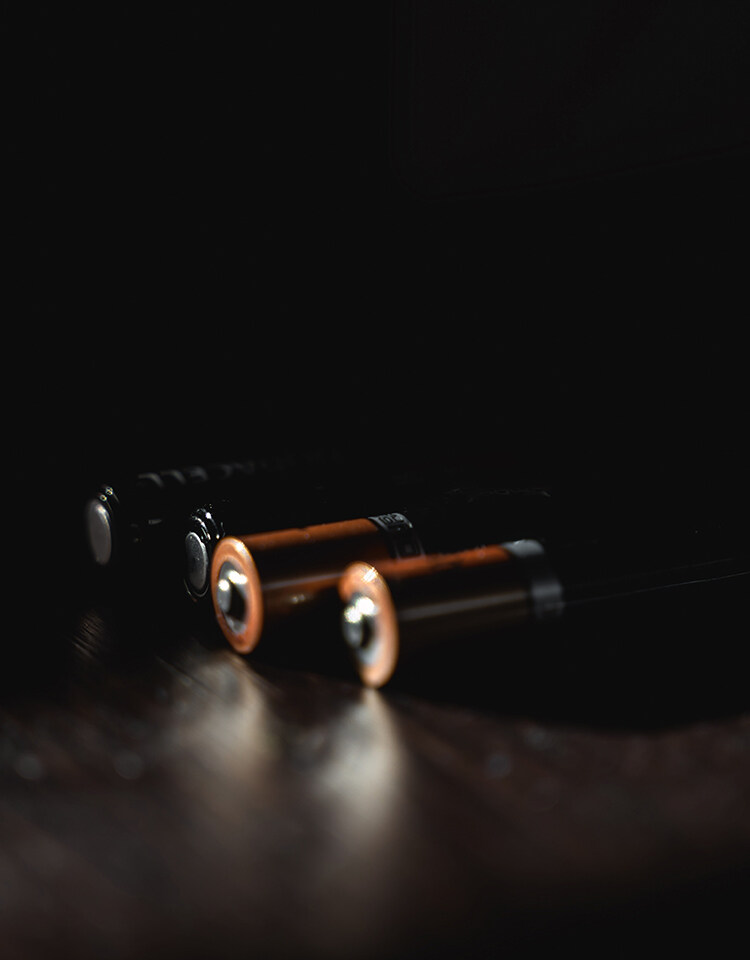Email format error
Email cannot be empty
Email already exists
6-20 characters(letters plus numbers only)
The password is inconsistent
Please enter the email address you’d like your password reset information sent to.
Email format error
Email cannot be empty
Email does not exist
Reset account password
For the account
6-20 characters(letters plus numbers only)
The password is inconsistent
Reset success
Your password was reset. You can log in using your new password.
Login

Alkaline battery & Button cell manufacturing process-News

How to choose alkaline batteries?
2022-04-29 10:34:54
Let's compare several disposable batteries: lr44 button battery rechargeable, lr44 battery 100 pack, alkaline rechargeable lr44 button cell batteries, carbon batteries, lithium iron batteries
1. Carbon battery
Carbon batteries, the scientific name is neutral zinc-manganese dry battery (zinc-manganese dry battery), the easiest way to identify: the model on the battery skin is R6+ suffix (No. 5) / R03+ suffix (No. 7), this is the For batteries, the suffix S means normal, P means high power, C means high capacity and so on. Carbon batteries have very low discharge power and low discharge capacity, so they are only suitable for low-power appliances such as watches, remote controls, etc.
In addition, the negative electrode of the carbon battery is the battery shell. After the discharge, the electrolyte is often leaked due to the rupture of the shell, which damages the electrical equipment. The biggest advantage is that the price is cheap. The unit price on the market is often less than one yuan, or even less than 5 yuan (of course, the quality is not good).
2. Alkaline batteries
Alkaline batteries, also known as alkaline dry batteries, alkaline zinc-manganese batteries, and alkaline-manganese batteries, are the best-performing varieties in the current commercial zinc-manganese dry batteries. The type of alkaline battery is LR6 (size five)/LR03 (size seven), and the prefix L stands for alkaline (a"L"kaline). Of course there may be a suffix after the number, but it's not common. The alkaline battery uses electrolytic manganese dioxide to make a ring-shaped positive electrode, and a zinc paste prepared with zinc powder and additives is used as the negative electrode.
Due to the strong conductivity of the electrolyte, the surface area of positive and negative materials is much better than that of carbon batteries, and the promotion of the electrochemical reaction of the zinc-manganese system under strong alkaline conditions, the output power and capacity of alkaline batteries are far better than Carbon batteries.
Alkaline batteries are more suitable for high-power electrical appliances than carbon batteries, but with the development of digital technology, many electrical appliances can be called electric tigers, such as high-brightness LED flashlights, flashes, etc. The current of these electrical appliances is often 1500mA, and the general alkaline battery is probably also embarrassing.
The leakage problem of carbon and alkaline lr44 battery 100 pack has always been a headache for consumers. Needless to say, carbon batteries use the negative electrode zinc that is continuously consumed during the discharge process as the shell, which determines that the shell is likely to rupture and leak in the later stage of discharge. After all, the reaction does not necessarily occur so uniformly.
Although the alkaline rechargeable lr44 button cell batteries use a sealed battery structure, the alkaline solution has a characteristic called wettability, which has a particularly strong adsorption capacity on the metal surface. This causes the so-called alkali climbing phenomenon, which is what we often call the phenomenon of battery leakage. The leakage is not terrible, but it mainly corrodes expensive electrical appliances.
In addition, when the alkaline lr44 button battery rechargeable is over-discharged, the negative electrode produces hydrogen gas, and the internal pressure of the battery increases. In order to avoid the battery explosion, the pressure relief valve at the negative electrode will be opened, and the exhaust will of course leak liquid at the same time. Battery leakage is a very pleasant and painful thing. Lightly corrodes the electrodes and affects the contact, and in severe cases corrodes the circuit board and expensive electrical appliances are scrapped. So, for a long time, an important improvement goal of the battery is to have no leakage.
1. Carbon battery
Carbon batteries, the scientific name is neutral zinc-manganese dry battery (zinc-manganese dry battery), the easiest way to identify: the model on the battery skin is R6+ suffix (No. 5) / R03+ suffix (No. 7), this is the For batteries, the suffix S means normal, P means high power, C means high capacity and so on. Carbon batteries have very low discharge power and low discharge capacity, so they are only suitable for low-power appliances such as watches, remote controls, etc.
In addition, the negative electrode of the carbon battery is the battery shell. After the discharge, the electrolyte is often leaked due to the rupture of the shell, which damages the electrical equipment. The biggest advantage is that the price is cheap. The unit price on the market is often less than one yuan, or even less than 5 yuan (of course, the quality is not good).
2. Alkaline batteries
Alkaline batteries, also known as alkaline dry batteries, alkaline zinc-manganese batteries, and alkaline-manganese batteries, are the best-performing varieties in the current commercial zinc-manganese dry batteries. The type of alkaline battery is LR6 (size five)/LR03 (size seven), and the prefix L stands for alkaline (a"L"kaline). Of course there may be a suffix after the number, but it's not common. The alkaline battery uses electrolytic manganese dioxide to make a ring-shaped positive electrode, and a zinc paste prepared with zinc powder and additives is used as the negative electrode.
Due to the strong conductivity of the electrolyte, the surface area of positive and negative materials is much better than that of carbon batteries, and the promotion of the electrochemical reaction of the zinc-manganese system under strong alkaline conditions, the output power and capacity of alkaline batteries are far better than Carbon batteries.
Alkaline batteries are more suitable for high-power electrical appliances than carbon batteries, but with the development of digital technology, many electrical appliances can be called electric tigers, such as high-brightness LED flashlights, flashes, etc. The current of these electrical appliances is often 1500mA, and the general alkaline battery is probably also embarrassing.
The leakage problem of carbon and alkaline lr44 battery 100 pack has always been a headache for consumers. Needless to say, carbon batteries use the negative electrode zinc that is continuously consumed during the discharge process as the shell, which determines that the shell is likely to rupture and leak in the later stage of discharge. After all, the reaction does not necessarily occur so uniformly.
Although the alkaline rechargeable lr44 button cell batteries use a sealed battery structure, the alkaline solution has a characteristic called wettability, which has a particularly strong adsorption capacity on the metal surface. This causes the so-called alkali climbing phenomenon, which is what we often call the phenomenon of battery leakage. The leakage is not terrible, but it mainly corrodes expensive electrical appliances.
In addition, when the alkaline lr44 button battery rechargeable is over-discharged, the negative electrode produces hydrogen gas, and the internal pressure of the battery increases. In order to avoid the battery explosion, the pressure relief valve at the negative electrode will be opened, and the exhaust will of course leak liquid at the same time. Battery leakage is a very pleasant and painful thing. Lightly corrodes the electrodes and affects the contact, and in severe cases corrodes the circuit board and expensive electrical appliances are scrapped. So, for a long time, an important improvement goal of the battery is to have no leakage.
3. A new generation of dry batteries: lithium iron batteries lithium iron dry batteries, the full name of lithium-iron disulfide dry batteries. Because this battery uses a new internal material and has various characteristics, it is often called the third-generation dry battery in the industry. Compared with the alkaline batteries that existed in 1949, the emergence of lithium iron batteries is indeed very novel.
The reversibility of the reaction of the positive iron disulfide during discharge is relatively narrow, so this special battery is not suitable for developing into a rechargeable battery, and the use of lithium metal, which is not conducive to charging but has a higher capacity as the negative electrode, can improve the usability. capacity.
This makes this battery ideal for primary battery applications and the best alternative to carbon and alkaline batteries. Due to the violent reaction between lithium and water, the lithium-iron battery electrolyte uses an organic solvent containing lithium salts instead of an aqueous solution. Compared with carbon batteries and alkaline batteries, this new type of lithium-iron battery is from The material eliminates the risk of leakage.
The weight of the same size lithium-iron disulfide battery is only half of the alkaline battery, and the total discharge energy is more than 25% higher than that of the alkaline battery. It has an obvious discharge voltage plateau (about 1.45V), so the discharge voltage of lithium iron batteries is more stable than that of alkaline batteries. The discharge power is significantly higher than that of alkaline batteries.
It is especially suitable for use in heavy-duty occasions, such as the use of flashlights, power tools, electric toothbrushes, adult toys, and children's toys. At the same time, compared with alkaline batteries, its leakage rate and self-discharge are lower, so it also has certain advantages for low-power electrical appliances, but the biggest factor restricting its popularity is the high production cost, and the unit price of the battery can be high. Alkaline batteries are more than 100%.
Lithium-iron batteries are fundamentally different from carbon and alkaline batteries in terms of internal materials, and are also completely different in production process. The interior of time-resistant lithium-iron batteries is also a winding structure. The three common types of lithium-iron batteries have their own advantages. Compared with the first-generation carbon and second-generation alkaline batteries, the third-generation lithium-iron batteries have more obvious advantages.
Among them, the most prominent performance advantages: it can be fully compatible with 1.5V power platform equipment; it is especially suitable for high current discharge; the power is sufficient, and its actual discharge capacity exceeds that of all civilian primary batteries on the market; the temperature range is wider than other primary batteries. High temperature performance, excellent low temperature performance, can be used in the environment of -40 ℃ to 60 ℃; small size, light weight, anti-leakage; low self-discharge, can be stored for up to 10 years; no materials harmful to the environment, no mercury and no chromium Real zero pollution from raw materials.
Based on the above advantages, lithium iron batteries are often referred to in the industry as the third generation of primary batteries after carbon batteries and alkaline batteries. Rechargeable, lr44 battery 100 pack has become a must-have item in many national earthquake and wartime emergency kits.
Contact us

